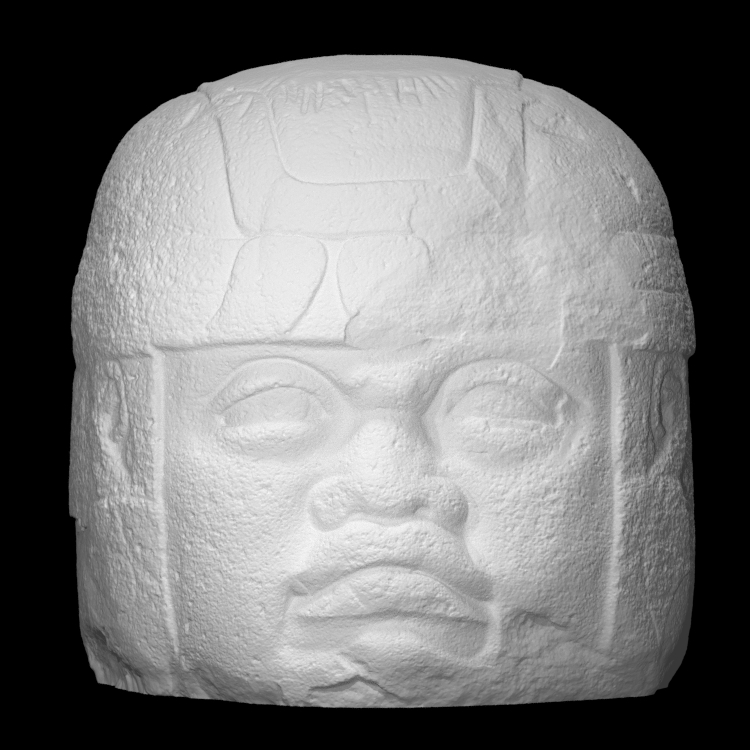
Colossal Olmec Head
myminifactory
The colossal heads of the Olmecs are a series of seventeen massive stone sculptures depicting human faces, carved from enormous basalt boulders that were transported over long distances with great effort and resources. These monumental figures showcase mature men with prominent cheeks, flat noses, and slightly crossed eyes, characteristics still common among the inhabitants of Tabasco and Veracruz. The backs of these colossal heads are often flat, while the fronts feature intricate headdresses and ear ornaments that add to their grandeur. Each of the known colossal heads has a distinct headdress, arranged in lines or groups at major Olmec centers, but the methods used to transport these massive stone slabs remain unclear. Given their enormous size, each head is estimated to weigh between 6 and 50 tons, with some abandoned and left unfinished near their source of origin. The Olmecs developed in southeastern Mexico's lowlands around 1500-400 BC, with their heartland located on the Gulf Coast within Veracruz and Tabasco states. This area spans approximately 275 kilometers east to west and extends about 100 kilometers inland from the coast, where the Olmecs are regarded as the first civilization to emerge in Mesoamerica. The Olmecs were pioneers in constructing monumental architecture and settling in towns and cities, while also developing a sophisticated style of stone sculpture. In the early 21st century, evidence emerged of Olmec writing, with the earliest examples of hieroglyphs dating back around 650 BC. Examples of script have been found on roller stamps and stone artifacts; these texts are short and partially deciphered based on their similarity to other Mesoamerican scripts. The seventeen confirmed colossal heads are known from four sites within the Olmec heartland, namely San Lorenzo Tenochtitlán, La Venta, Tres Zapotes, and La Cobata. La Venta Monument 1 is believed to be the portrait of La Venta's final ruler, measuring 2.41 meters high by 2.08 meters wide by 1.95 meters deep, weighing 24 tons. La Venta Monument 1 features a headdress decorated with three motifs representing animal claws or fangs, an angular U-shaped decoration descending from the scalp, and prominent ear ornaments that descend from the earlobe to the base of the monument. The face is that of a mature man, with wrinkles around the mouth, eyes, and nose. The colossal head was first described by Franz Blom and Oliver La Farge in 1925, who investigated the La Venta remains on behalf of Tulane University. Matthew Stirling fully excavated the monument in 1940 after clearing thick vegetation that had covered it for years. Today, Monument 1 is housed at the Parque-Museo La Venta in Villahermosa. The associated finds have been radiocarbon dated to between 1000 and 600 BC, providing valuable insights into the origins of this enigmatic civilization.
With this file you will be able to print Colossal Olmec Head with your 3D printer. Click on the button and save the file on your computer to work, edit or customize your design. You can also find more 3D designs for printers on Colossal Olmec Head.
